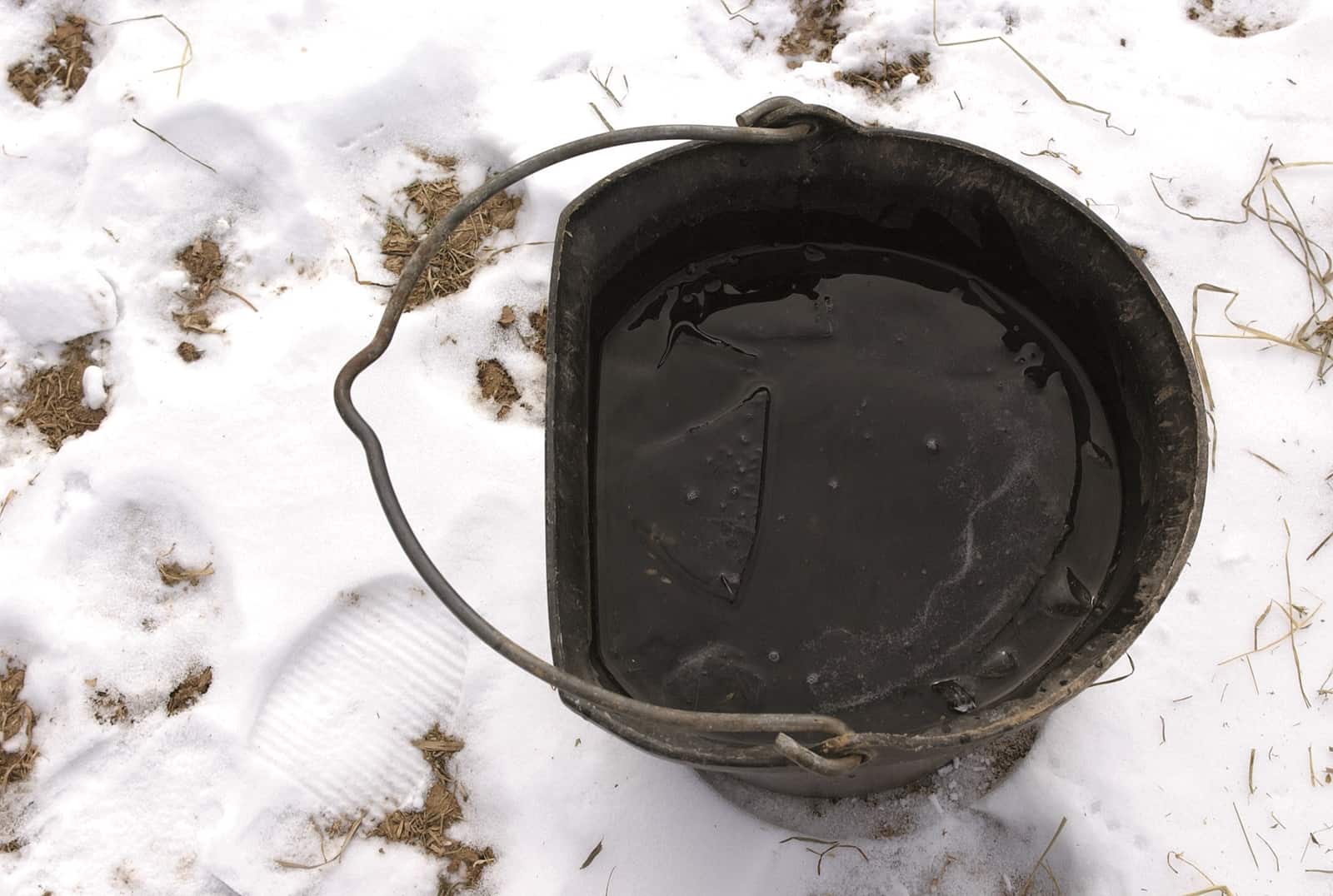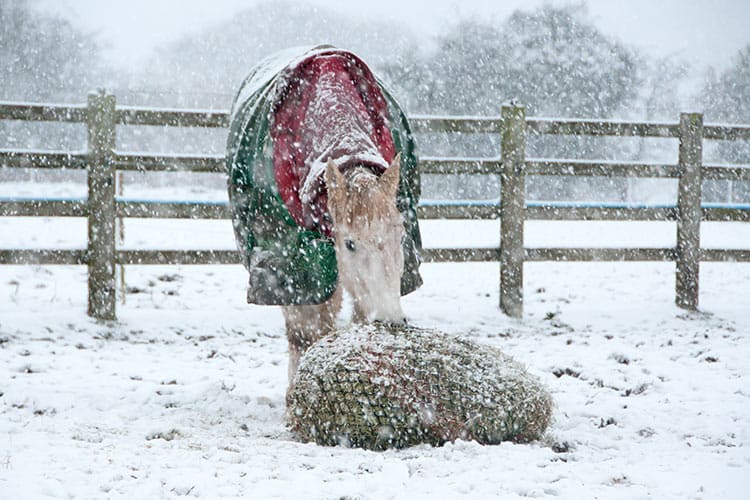How to Keep Your Horse Hydrated During the Winter

As we head into an incredibly cold stretch of weather for the start of winter, there has been much discussion on how to prepare horses. Increasing forage intake to help keep core body temperature warm while it ferments in the digestive tract is incredibly important. Also consider providing blankets and shelter, depending on your horse’s hair coat.
One factor we cannot overlook, however, is keeping horses hydrated. Most equine nutritionists consider water to be the most important nutrient because of the various functions it performs. These include regulating body temperature, digestion, absorption, and utilization of nutrients, moving feedstuffs through the digestive tract from mouth to rectum, and removing waste products.
On average, the adult horse drinks approximately 1 gallon per 100 pounds of body weight; therefore, the average 1,000-pound horse needs about 10 gallons of water a day. It is very important to make sure horses are consuming enough water, especially when their diets are high in dry feed content, such as hay, to help ensure the feed is moving through the digestive system. If horses do not consume an adequate amount of water, they may become dehydrated quickly, could go off their feed, and might suffer from impaction colic.

Many horses decrease their water intake below required amounts in extremely cold weather for a variety of reasons, such as not wanting or being able to walk to a water source, water being too cold to drink (preferred water temperature is between 45 and 65 degrees F for most horses), or water being frozen.
Horse owners and managers can do several things to ensure their horses do not become dehydrated:
- If a drop in temperature is predicted, make sure water is freely available before the temperature change, so horses are properly hydrated before the cold weather hits.
- If hot water is not available in the barn, get insulated water jugs and bring it from the house. Invest in heated water buckets or a water heater. Make sure these are grounded, and routinely check to make sure they are working properly. A horse that gets shocked when he tries to drink will be conditioned to not drink!
- Break ice if it forms on the water source, and remove the chunks of ice. Although horses can break through thin ice, it can deter them from drinking. “Frost-free” type waterers can be helpful, but even these can freeze if horses are not drinking often enough. Check water sources for ice at least twice a day and more often in colder conditions.
- Monitor your horse’s hydration status daily. If you do not know how, ask your veterinarian or another experienced horse person to train you in doing skin pinch tests and evaluating mucous membranes.
- Soaking feeds can be a way to get additional water into your horse. For example, beet pulp is a feed that can hold a good amount of water, and most horses are willing to eat it. Chopped hays also absorb water and are usually willingly consumed by horses. Ideally, soak these dry feeds in warm water for about 15 minutes before offering them to the horse.
Take-Home Message
When the temperatures drop, make sure water is accessible at all times, and that horses are drinking enough. It is crucial to have water available at mealtimes, especially when feeding dry feeds; researchers have shown that horses drink the most water within three hours of consuming a meal. Finally, carefully monitor both water intake and hydration status daily, especially during extreme or rapid changes in the weather.
Written by:
Janice L. Holland, PhD
Related Articles
Stay on top of the most recent Horse Health news with















